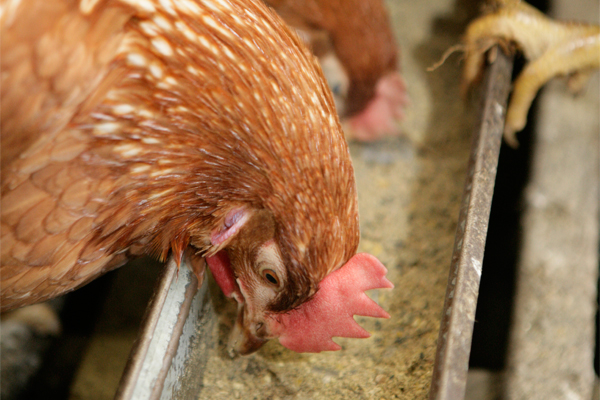Split feeding meets layers’ specific needs

Split feeding is an alternative system for feeding layers. It ?provides different morning and afternoon diets to the hens. This responds to their physiological feeding behaviour and nutrient intake according to the different requirements throughout the day. Benefits are cost savings, greater profits and increased egg quality. Better sustainability is the result of improved nutrient efficiency.
By Jon de Los Mozos and Felipe Sanchez, Nutreco, Spain
Laying hens lay the majority of their eggs during the morning. The interval between two successive ovipositions is about 24 hours or slightly greater. Their requirements for amino acids, energy, calcium and phosphorous do not remain constant, but vary during the day. This depends on the hens physiological needs for the formation of the various components of the egg.
When birds are offered diets that allow self-selection of nutrients, there is an increased intake of protein and energy observed in the morning around the time when the egg is produced. The intake of calcium is higher during the latter part of the day, as illustrated in Figure 1, when choice feeding was compared to a standard feeding system. As a result, animals consumed fewer nutrients when they were able to choose the nutrients throughout the day.
This suggests that the hen is using the energy, amino acids, calcium and phosphorous more efficiently by consuming these nutrients at moments in the day when the requirement is high. Therefore the current practice of providing hens with only one diet might not be an ideal approach for optimal utilisation of nutrients.
Experimental design trials
The R&D division of Nutreco has been developing a new feeding programme since 2005 to feed laying hens according to the specific nutrient requirement for egg formation that varies throughout the day. The findings of this research resulted in the development of this split feeding programme, where two diets are used to meet the dynamic requirements for egg formation. When this is compared to the single feed, the total intake of those nutrients can be reduced.
The morning diet is designed to meet requirements during the morning when the albumen is being formed, and the ovulation and oviposition occur. The afternoon diet is designed to meet requirements for the eggshell formation.
As a result of research, new requirements for energy, amino acids, calcium and phosphorous were obtained for the morning and afternoon diets. Where as, compared to the single feed, the total intake of those nutrients can be reduced; performance was at least as good as when a single feed is applied. Extra benefits were also observed during the project.
Improved eggshell quality
From all the experiments performed with the split feeding system, a consistent improvement in eggshell quality (eggshell weight, thickness or SWUSA = eggshell weight per unit of surface area) compared to a single control feed, was observed (Figure 2).
The effect of the split feeding system was tested in an old flock (from 91 to 98 weeks of age). The first four weeks (91-94) a single feed was used and the next four weeks (95-98) laying hens were fed with a split feeding programme. The split feeding system significantly reduced the percentage of broken and shell-less eggs compared to the values obtained during the preceding period, when using a single feed system, and significantly increased the number of sellable eggs (Figure 3).
Reduction of nutrient loss
Results from excreta composition proved that split feeding is a more sustainable feeding programme by reducing the levels of nitrogen, phosphorous and calcium excreted (Figure 4). This was possible due to a lower daily nutrient intake and a better use of those nutrients.
References are available from the authors on request
[Source: World Poultry magazine Vol 30 nr 3, 2014]













